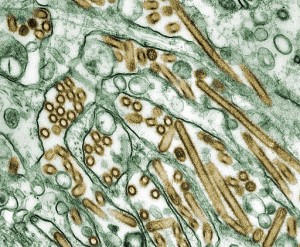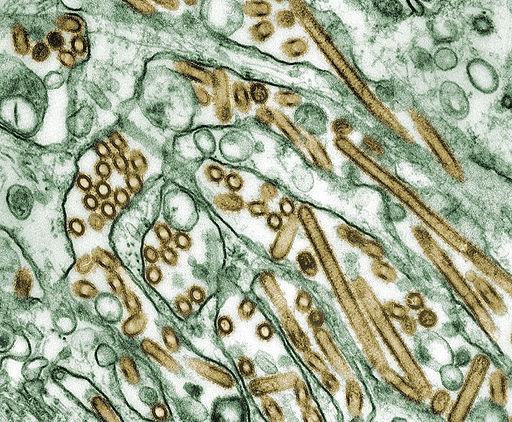 Scientists have been working with strands of the avian flu (also known as the bird flu and H5N1) to try and develop a vaccine. At first glance, that might seem normal: every vaccine we consent to contains a live virus that our body learns to fight off. When talking about H5N1, however, it is not the effect of the vaccine that we should be worried about. Scientists are not only working on developing a vaccine, they are actively weaponizing the virus.
Scientists have been working with strands of the avian flu (also known as the bird flu and H5N1) to try and develop a vaccine. At first glance, that might seem normal: every vaccine we consent to contains a live virus that our body learns to fight off. When talking about H5N1, however, it is not the effect of the vaccine that we should be worried about. Scientists are not only working on developing a vaccine, they are actively weaponizing the virus.
The Censorship Debate
News reports indicate that scientists are especially unwilling to censor their findings for ethical reasons. Not only are scientists reluctant to comply with “suggested” censorship handed down from the federal government, failing to publish the methodologies poses an even bigger problem: scientists in countries that suffer from worse outbreaks of H5N1 (think China, India) will be unable to re-create the findings or adequately prepare for an outbreak in their cities.
With so much international pressure to have research with H5N1 peer reviewed, scientists are facing a new dilemma: if they publish and publicize their work, their research can function as an instruction manual for terrorist groups who want to use bioweapons. But if they do not publish their research, they face increased scrutiny from their entire field, and the vaccine may face difficulties getting approved by the FDA. Do we go unvaccinated from a potentially life-threatening bioweapon? Or do hand terrorists the instructions they need to attack innocent Americans?
For now, they have arrived at a compromise with the National Science Advisory Board, publishing their findings but not their methodologies. While that may seem like a safe compromise, it’s an untenable solution for future dilemmas. Scientific research on the potential weaponization of H5N1, as well as other deadly diseases, is undoubtedly to continue. Sooner or later, the findings of this research will make its way into the public domain. From there, it is only a matter of time until someone with anti-American agenda gets their hands on it.
The Death Toll
With a disease as deadly as H5N1, we cannot afford to take any chances. The disease has a recorded 60 percent mortality rate in humans. Should an H5N1 attack hit any major city, we would be facing the loss of most of its population. If terrorists successfully launched an attack that covered the entire breadth of New York City, we could be facing the loss of 13.2 million Americans. The only reason this disease has not already caused widespread death is because it is not easily spread between humans in its current state. Scientists have already proven that they can change that, making it highly virulent and contagious.
How To Survive Chemical And Biological Attacks On American Soil
National Science Advisory Board for Biosecurity chair Paul Keim acknowledged the immense risk involved should someone steal or leak the currently manufactured virus, saying, “This is such a dangerous biological weapon, it would not be controllable. Whoever used it would doubtlessly decimate their own people as well.” Lest you worry that this is hype, or a dramatic overreaction to a fairly small threat, remember that the Spanish Flu of 1918-1919 killed between 20-50 million people, with a mortality rate of only 2.5%. The disease was not particularly deadly in and of itself: it simply infected so many people that huge numbers of deaths resulted accordingly. Altered versions of the H5N1 virus would combine these two factors: an extremely contagious disease with a 60+% mortality rate would kill far more than the 20-50 million that were killed during the Spanish Flu outbreak. We would be looking at a decimated U.S. population, probably unable to recover. We are, at this moment, totally vulnerable to this type of attack.
The Logistics
All that a motivated group would have to do to attack the United States with an altered version of the H5N1 virus would be to expose a small group of individuals to the virus. The virus would do the rest of the work itself, making it one of the (potentially) easiest and yet most deadly attacks that a terrorist group or enemy nation could utilize against us. Keim mentions that though the disease would likely also kill the engineers of the virus and the home country or base group involved in the attack, those groups would be willing to risk that outcome for such high casualties on American soil. For every suicide bomber that has been publicized in the news: imagine if the bomber that killed thirty people suddenly had the power to kill 3 million. Would they jump at the opportunity? Without a doubt. That is a risk that we cannot stand idly by and watch grow: we have to proactively push back against the tides of biological agents being weaponized.
The best way that the American people can prepare themselves for a future attack that employs altered H5N1 as its main weapon involves a two-pronged strategy. First, we need to limit the publication of the methodology of these experiments and, if necessary, limit these experiments. These choices should not be made, of course, by the government: we should urge scientists to make a choice that has the potential to saves millions of lives by releasing limited information to the public. Even releasing the methodology to fellow scientists, but not to the public could serve as a substantial buffer between the public and an H5N1 pandemic. Secondly, we should set our scientists to work overtime on developing a vaccine to the most likely alterations of the H5N1 disease. The focus of scientific research should no longer be weaponization first and vaccine second. The emphasis should be on protecting our population from the disease. It is fine if that requires manufacturing limited amounts of the disease, but our focus should never be swayed from the ultimate goal: protecting the American population from a deadly pandemic.











